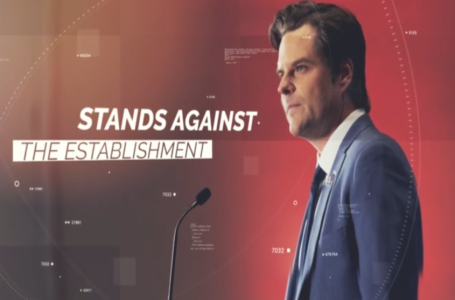Remarkable Graphs Exposing Media’s Hold on What We Care About

Home of News, Politics & Opinion
The media tells us what to believe and what to care about. The graphs below show how effective they are in doing it.
In a series of tweets and graphs, Kanekoa, a popular Twitter user, said, “Look at the increase of news articles mentioning “white privilege,” “systemic racism,” “diversity and inclusion,” and “unconscious bias.”
Since 2010, especially after 2012, the concerns about these issues have risen at the same rate as media reporting about them!
Kanekoa asks, “How does the media’s focus on identity politics and critical race theory contribute to the division and polarization of society?”
Other terms he put on graphs that were mostly non-existent until 2010 and especially since Biden’s second term included “whiteness,” “intersectionality,” “critical race theory,” “diversity training,” “discrimination,” “social justice,” “people of color,” “racism,” “social justice,” “people of color,” and “racism.”
Along with the graphs, Kanekoa writes the following:
- For the better part of the last four decades, the issue of racism was not considered by the vast majority of Americans as the most critical problem facing the country.
- Between 2011 and 2019, the New York Times and the Washington Post increased their usage of the words “racist,” “racists,” and “racism” by over 700% and nearly 1,000%, respectively.
- In 2011, just 35% of white liberals thought racism in the United States was “a big problem,” according to national polling. By 2015, this figure had ballooned to 61% and further still to 77% in 2017.
- In 2006, 45% of white Democrats and 41% of white Republicans knew someone they considered racist. By 2015, this increased to 64% for white Democrats but remained 41% for white Republicans. Notably, the % decreased among black & hispanic Democrats during the same period.
- Between 2013 and 2019, the New York Times and the Washington Post increased their usage of the terms “systemic racism,” “structural racism,” and “institutional racism” by roughly 1,000%.
- Between 2013 and 2019, the New York Times and the Washington Post increased their usage of “white privilege” and “racial privilege” by 1,200% and nearly 1,500%, respectively.
- Between 2013 and 2021, positive views on race relations in the United States sharply declined from 69% to 38% for black and white adults. Why does the media promote identity politics and critical race theory if it divides and polarizes society?
That’s a good question. Why do you think? It’s more than about selling papers. The mainstream media is owned by five companies shaping and manipulating our thoughts and actions. They tell us what to believe and what to care about.
Elon Musk responded to the following data, saying, “WOW.” Kanekoa answered that it was “remarkable” that “until 2013, racism had appeared to be a non-issue in traditional measures such as reduced racial discrimination, an increase in interracial marriage, and the election of a black president. How much did the media’s obsessive coverage of racism alter this?”
#1 Look at the increase of news articles mentioning “white privilege,” “systemic racism,” “diversity and inclusion,” and “unconscious bias.”
How does the media’s focus on identity politics and critical race theory contribute to the division and polarization of society? pic.twitter.com/lYfR0JU1Ah
— KanekoaTheGreat (@KanekoaTheGreat) May 8, 2023
sxxx
#3 Look at the increase in the number of New York Times articles mentioning “discrimination,” “social justice,” “people of color,” and “racism.” pic.twitter.com/d89u00p8qE
— KanekoaTheGreat (@KanekoaTheGreat) May 8, 2023
#5 For the better part of the last four decades, the issue of racism was not considered by the vast majority of Americans as the most critical problem facing the country. pic.twitter.com/2Pf8PTEMqT
— KanekoaTheGreat (@KanekoaTheGreat) May 9, 2023
#7 In 2011, just 35% of white liberals thought racism in the United States was “a big problem,” according to national polling.
By 2015, this figure had ballooned to 61% and further still to 77% in 2017. pic.twitter.com/hpA2KeRnPX
— KanekoaTheGreat (@KanekoaTheGreat) May 9, 2023
#9 Between 2013 and 2019, the New York Times and the Washington Post increased their usage of the terms “systemic racism,” “structural racism,” and “institutional racism” by roughly 1,000%. pic.twitter.com/t2bs7g6UCG
— KanekoaTheGreat (@KanekoaTheGreat) May 9, 2023
#11 Between 2013 and 2021, positive views on race relations in the United States sharply declined from 69% to 38% for black and white adults.
Why does the media promote identity politics and critical race theory if it divides and polarizes society? pic.twitter.com/2E7d8jfnx2
— KanekoaTheGreat (@KanekoaTheGreat) May 9, 2023
Elon Musk responded.
It’s remarkable how, until 2013, racism had appeared to be a non-issue in traditional measures such as reduced racial discrimination, an increase in interracial marriage, and the election of a black president.
How much did the media’s obsessive coverage of racism alter this?
— KanekoaTheGreat (@KanekoaTheGreat) May 8, 2023















